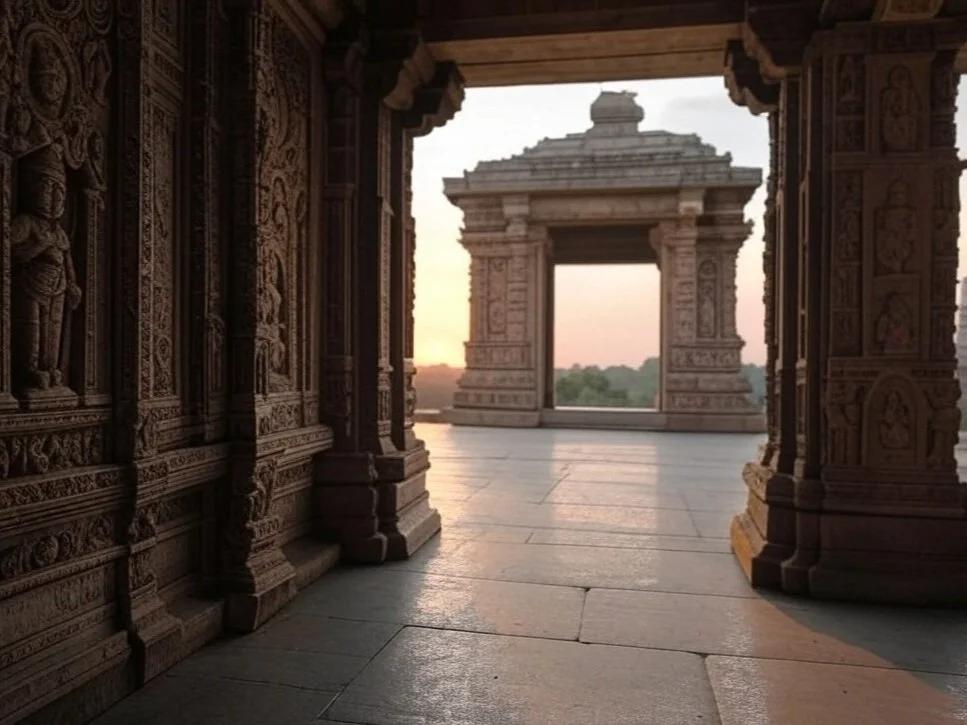Religion has been a driving force behind some of the most magnificent and enduring achievements in human history. From the towering pyramids of Egypt to the intricate cathedrals of medieval Europe, religious beliefs have profoundly influenced the construction of monuments, shaping their design, purpose, and symbolism. Archaeological discoveries have provided valuable insights into the rituals and practices associated with these structures, revealing the deep connection between spirituality and human creativity.
Temples: Houses of the Gods
Temples were among the earliest and most significant religious structures, serving as houses for deities and centers for worship. Their design and construction were often guided by religious beliefs and cosmological principles.
Ancient Mesopotamia
Ziggurats: In Mesopotamia, ziggurats were massive stepped structures that served as temples to the gods. The Ziggurat of Ur, built around 2100 BCE, is one of the best-preserved examples. These structures were believed to be the meeting places of heaven and earth, with their height symbolizing a connection to the divine.
Rituals and Offerings: Archaeological evidence, such as cuneiform tablets and artifacts found within ziggurats, indicates that rituals and offerings were central to temple activities. Priests conducted ceremonies to honor the gods, ensuring their favor and the prosperity of the community.
Ancient Greece
Parthenon: The Parthenon, dedicated to the goddess Athena, is one of the most iconic examples of Greek temple architecture. Built in the 5th century BCE on the Acropolis of Athens, it exemplifies the harmony and proportion revered in Greek culture.
Religious Festivals: Greek temples were the focal points of religious festivals, such as the Panathenaic Festival, which included processions, sacrifices, and athletic competitions. Archaeological finds, including votive offerings and inscriptions, provide insights into these practices.
Pyramids: Monuments to the Afterlife
Pyramids, particularly those in ancient Egypt, were monumental tombs designed to ensure the safe passage of pharaohs to the afterlife. Their construction was deeply rooted in religious beliefs about death and resurrection.
The Pyramids of Giza
Great Pyramid of Khufu: The largest of the Giza pyramids, built around 2560 BCE, was constructed as a tomb for Pharaoh Khufu. Its precise alignment with the cardinal directions and its massive scale reflect the Egyptians' belief in the pharaoh's divine status and eternal life.
Funerary Practices: Archaeological discoveries within the pyramids, such as burial chambers, sarcophagi, and funerary goods, reveal the elaborate rituals associated with death and the afterlife. The Book of the Dead, found in many tombs, provided spells and instructions to guide the deceased through the afterlife.
Cathedrals: Expressions of Faith
In medieval Europe, cathedrals were grand expressions of Christian faith, designed to inspire awe and devotion. Their construction involved intricate architectural techniques and symbolic elements.
Gothic Cathedrals
Notre-Dame de Paris: Built in the 12th and 13th centuries, Notre-Dame is a masterpiece of Gothic architecture. Its soaring spires, flying buttresses, and stained glass windows were intended to draw the eyes and minds of worshippers heavenward.
Religious Symbolism: The layout and decoration of cathedrals were rich with religious symbolism. The cruciform plan represented the cross of Christ, while stained glass windows depicted biblical stories, serving as visual sermons for the largely illiterate population.
Rituals and Liturgy: Archaeological and historical evidence, such as liturgical objects, choir stalls, and altars, provides insights into the rituals and ceremonies conducted within cathedrals. These included the Mass, sacraments, and processions, which were central to medieval Christian worship.
Archaeological Insights into Rituals
Archaeological finds have shed light on the religious practices and rituals associated with these monumental structures.
Temple Offerings: Excavations at ancient temples have uncovered a wealth of votive offerings, including statues, jewelry, and food remains. These offerings were made to honor the gods and seek their favor.
Burial Goods: Tombs and burial sites, such as those in the Valley of the Kings in Egypt, have revealed a variety of funerary goods, including amulets, weapons, and household items. These objects were believed to accompany the deceased in the afterlife.
Liturgical Artifacts: In medieval cathedrals, archaeological finds such as chalices, reliquaries, and vestments provide insights into the liturgical practices and the veneration of saints and relics.
Conclusion
The role of religion in ancient art and architecture is a testament to the profound influence of spiritual beliefs on human creativity and endeavor. Temples, pyramids, and cathedrals were not merely structures; they were expressions of faith, designed to honor the divine, ensure the well-being of the community, and provide a connection to the transcendent. Through archaeological discoveries, we gain a deeper understanding of the rituals and practices that animated these sacred spaces, revealing the enduring power of religion to shape our world.







